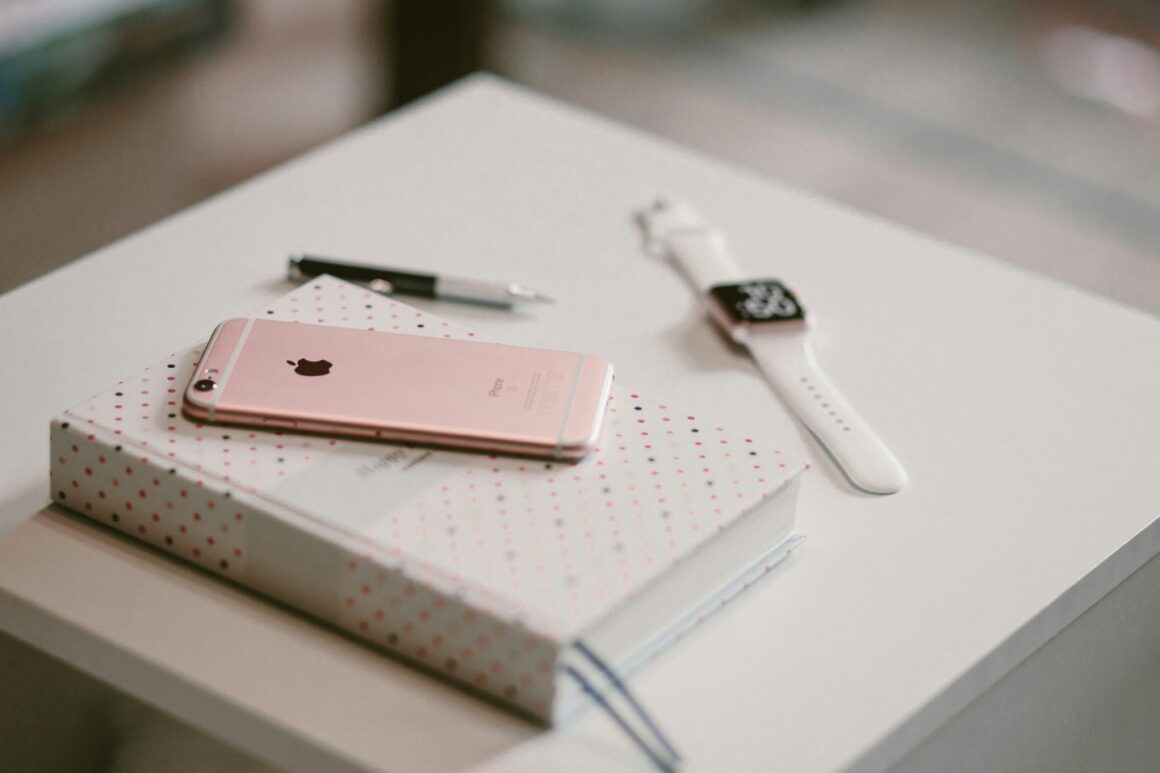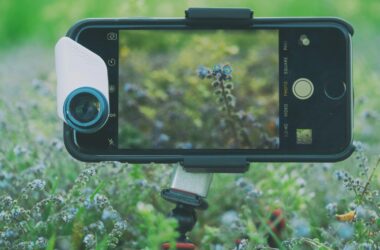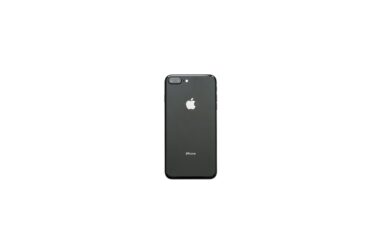1. Introduction
In today’s digital age, the concept of a smart home is no longer a futuristic vision but a reality that offers unparalleled convenience and control over our living environments. At the heart of this revolution is the concept of smart home integration, a technology that seamlessly connects various home devices and appliances to a central system, enabling automated control and monitoring. This integration has been significantly enhanced by the use of smartphones, particularly iPhones, which have become the ultimate remote control for our homes.
With an iPhone, users can effortlessly manage lighting, adjust thermostats, monitor security cameras, and even unlock doors with just a few taps on their screen. This level of control not only simplifies daily routines but also enhances energy efficiency and security. The convenience offered by integrating your iPhone with smart home devices is unparalleled, turning mundane tasks into seamless parts of your digital ecosystem.
Moreover, the proliferation of the Internet of Things (IoT) has played a crucial role in this evolution, with more devices than ever capable of connecting to the internet and communicating with each other. This growing trend towards IoT in home automation is making smart homes more accessible, customizable, and efficient, paving the way for a future where our homes are not just places of comfort, but intelligent companions that respond to our needs and preferences with little to no effort on our part.
As we delve deeper into the integration of iPhones with smart home devices, we’ll explore the benefits, essential compatible devices, and a step-by-step guide to achieving a seamlessly automated home environment that caters to your lifestyle, making everyday tasks more enjoyable and efficient.
2. Understanding Smart Home Integration with iPhone
Smart home integration represents the cornerstone of modern home automation, entailing the connection and coordination of various home devices and appliances through a centralized network. This technology enables homeowners to automate routine tasks, such as adjusting lighting, controlling temperature, managing security systems, and even operating kitchen appliances, through a unified system. At its core, smart home integration seeks to enhance convenience, energy efficiency, and security, transforming the way we interact with our living spaces.
Enter the iPhone, a device that has transcended its communication origins to become a powerful tool for smart home management. Through the use of apps and voice commands, the iPhone serves as a central control point, offering users the ability to manage and monitor their smart home devices from anywhere. Whether you’re on your couch or halfway around the world, your iPhone lets you control your home’s lighting, temperature, security systems, and more with ease and precision.
A pivotal player in this integration is Apple HomeKit, a framework specifically designed for home automation. HomeKit allows users to configure and control compatible devices through their iOS devices seamlessly. By using Siri, Apple’s voice assistant, homeowners can execute commands like “Turn off the lights in the living room” or “Adjust the thermostat to 70 degrees” simply by speaking to their iPhone. Furthermore, HomeKit provides a secure platform for connecting and managing smart home devices, ensuring that your home automation system is not just convenient but also secure.
The integration of iPhones with smart home devices via platforms like Apple HomeKit exemplifies the next step in home automation, offering a blend of convenience, control, and security that was once thought to be the stuff of science fiction. As we continue to embrace these technologies, our homes become more responsive to our needs, creating living environments that are truly smart.
3. Benefits of Integrating Your iPhone with Smart Home Devices
The fusion of iPhones with smart home devices ushers in a new era of convenience, efficiency, and security in our daily lives. This integration is not just about the luxury of modern technology; it’s about redefining the very essence of home living. Let’s delve into the core benefits that this technology offers.
3.1 Enhanced Convenience and Accessibility
The foremost advantage of integrating your iPhone with smart home devices is the unparalleled convenience it brings. Imagine adjusting your home’s temperature, dimming the lights, or playing your favorite music with a simple voice command or a few taps on your smartphone. This level of control is not just about comfort; it’s about making your home truly responsive to your needs and preferences, streamlining your daily routines, and saving you time. With accessibility at your fingertips, managing your home’s functionality becomes effortless, whether you’re in bed, at work, or on vacation.
3.2 Improved Energy Efficiency Through Automation
Another significant benefit of this integration is the positive impact on energy efficiency. Smart thermostats, for instance, can learn your schedule and preferences, adjusting your home’s temperature automatically to reduce energy consumption when you’re away. Similarly, smart lighting can be programmed to turn off when not needed, and smart plugs can cut power to devices in standby mode. Through automation, your home not only becomes smarter but also more environmentally friendly, leading to reduced energy bills and a smaller carbon footprint.
3.3 Increased Home Security with Real-Time Monitoring and Alerts
Enhancing home security is perhaps one of the most critical benefits of integrating your iPhone with smart home devices. With smart locks, you can control access to your home remotely, granting or revoking entry as needed. Smart cameras and security systems offer real-time monitoring capabilities, sending alerts directly to your iPhone at the first sign of unusual activity. This instant notification system allows for a swift response, whether it’s verifying a false alarm or contacting emergency services, giving you peace of mind that your home and loved ones are safe, no matter where you are.
4. Essential Smart Home Devices Compatible with iPhone
Diving into the world of smart home technology, the compatibility between iPhone devices and a wide range of smart home gadgets stands out as a game-changer. Here, we outline several key smart home devices that not only enhance your living experience but also seamlessly integrate with your iPhone, leveraging apps or the robust Apple HomeKit platform.
4.1 Smart Bulbs
Smart bulbs are foundational to any smart home setup, allowing users to adjust lighting levels, colors, and schedules directly from their iPhone. Compatible with Apple HomeKit, these bulbs can be controlled individually or in groups, creating the perfect ambiance for any occasion with just a few taps or via Siri voice commands. Brands like Philips Hue and LIFX offer extensive ranges that promise easy setup and integration.
4.2 Thermostats
Smart thermostats like the Nest Learning Thermostat and the Ecobee SmartThermostat not only learn your habits and preferences to adjust your home’s temperature automatically but also offer detailed energy usage reports directly to your iPhone. These devices can be controlled remotely via the Home app or third-party applications, ensuring your home’s climate is always to your liking, even before you step through the door.
4.3 Security Cameras
Enhancing home security, smart cameras such as the Arlo Pro series or the Logitech Circle View offer live streaming, motion detection, and night vision capabilities, all accessible from your iPhone. Integrated with Apple HomeKit, these cameras provide real-time alerts and recordings stored securely in iCloud, giving you peace of mind with comprehensive surveillance that’s just a swipe away.
4.4 Smart Locks
Smart locks, including the August Wi-Fi Smart Lock and the Yale Assure Lock SL, revolutionize the way we access our homes. With these devices, you can lock and unlock your doors remotely, grant temporary keys to guests, and monitor entry and exit logs through your iPhone. Apple HomeKit compatibility ensures that you can use Siri to control access to your home, offering a blend of convenience and security.
4.5 Smart Plugs
Smart plugs like the Wemo Mini Smart Plug turn any standard outlet into a smart one, allowing you to control non-smart appliances via your iPhone. These plugs work with Apple HomeKit, enabling you to turn devices on and off remotely, set schedules, and even monitor energy consumption for connected devices, all from the convenience of your smartphone.
5. Step-by-Step Guide to Integrating Your iPhone with Smart Home Devices
Integrating your iPhone with smart home devices can transform your living space into a hub of convenience and innovation. Here’s a comprehensive step-by-step guide to seamlessly connect and manage your smart home ecosystem using your iPhone:
Step 1: Setting Up Your Smart Home Devices for Connectivity
- Unbox and Install: Begin by unboxing each smart device and follow the manufacturer’s installation guide. This may involve physical setup like screwing in smart bulbs, mounting cameras, or installing smart locks.
- Power and Initial Setup: Ensure each device is powered on and in setup mode. This usually involves pressing a button on the device until an LED light indicates it’s ready to connect.
Step 2: Connecting the Devices to Your iPhone Using Wi-Fi or Bluetooth
- Wi-Fi Devices: For devices that connect via Wi-Fi, ensure your iPhone is connected to your home Wi-Fi network. Open the device’s official app and follow the prompts to connect the device to the same Wi-Fi network.
- Bluetooth Devices: For Bluetooth devices, go to the iOS Settings app, navigate to Bluetooth, and ensure it’s turned on. Open the device’s app and select the option to pair a new device. Follow the instructions to complete the pairing process.
Step 3: Using Apple HomeKit or Third-Party Apps for Device Management
- Apple HomeKit: For devices compatible with Apple HomeKit, open the Home app on your iPhone. Tap the “+” icon in the upper right corner, then select “Add Accessory.” Scan the HomeKit setup code found on the device or its manual. Follow the on-screen instructions to add the device to your Home app.
- Third-Party Apps: Some devices may require the use of their own app for setup and management. Download the respective app from the App Store, create an account if necessary, and follow the app’s guide to add and configure your device.
Step 4: Customizing Settings for Automation and Control Preferences
- Creating Scenes: In the Home app, you can create scenes that control multiple devices with a single command. For example, a “Good Night” scene could turn off all lights, lock the doors, and lower the thermostat.
- Setting Up Automations: Automations allow your smart home devices to operate based on certain conditions, like time of day, location, or the status of another device. This can be configured in the Automation tab of the Home app.
5.1 Troubleshooting Tips for Common Setup Issues
- Connection Failures: Ensure your device is within range of your Wi-Fi router or Bluetooth. Restart the device and attempt to connect again.
- Unresponsive Devices: Check the power supply and connections. Ensure the device’s firmware is up to date through its app.
- HomeKit Code Issues: If the HomeKit setup code isn’t working, ensure it hasn’t already been used with another home hub. Contact the manufacturer for a reset if necessary.
Integrating your iPhone with your smart home devices offers a level of interaction and convenience that can significantly enhance your daily life. By following these steps and utilizing the provided troubleshooting tips, you can enjoy a seamless and intuitive smart home experience tailored to your lifestyle and preferences.
6. Tips for Maximizing the Efficiency of Your Smart Home Integration
To truly harness the power of smart home technology and make your integration with the iPhone as efficient as possible, there are several strategies you can employ. From device management to security, here are some tips to optimize your smart home setup:
6.1 Best Practices for Managing and Organizing Your Devices on Your iPhone
- Use Groups and Rooms in the Home App: Organize your devices by assigning them to specific rooms or creating groups based on their function. This organization makes it easier to control multiple devices simultaneously and keeps your Home app tidy.
- Name Devices Clearly: Use descriptive names for your devices, such as “Kitchen Lights” or “Master Bedroom Thermostat.” Clear naming helps with voice commands and simplifies device management.
- Create Scenes for Routine Activities: Set up scenes in the Home app for activities like “Movie Night” or “Morning Routine” to control multiple devices with a single command, streamlining your daily activities.
6.2 Advice on Security Settings to Protect Your Smart Home System
- Regularly Update Device Firmware: Manufacturers often release firmware updates to address security vulnerabilities. Ensure your devices are set to update automatically or regularly check for updates.
- Use Strong Passwords and Two-Factor Authentication: Secure your Wi-Fi network and all smart home accounts with strong, unique passwords. Enable two-factor authentication where available to add an extra layer of security.
- Review Device Permissions: Periodically review the permissions granted to your smart home devices and apps, limiting access to only what’s necessary for functionality.
6.3 Recommendations for Apps that Enhance the Smart Home Experience
- Dedicated Manufacturer Apps: Besides the Home app, using apps from device manufacturers can unlock additional features and settings for your devices.
- IFTTT (If This Then That): This web-based service allows you to create custom automations between your smart home devices and various online services, enhancing functionality and personalization.
- Voice Assistant Apps: Apps like Siri Shortcuts can be used to create custom voice commands for controlling your smart home devices, offering a more personalized interaction.
Conclusion
As we wrap up this exploration into integrating your iPhone with smart home devices, we’ve covered a range of critical steps and strategies—from setting up and connecting smart devices to customizing and securing your smart home system. The journey into smart home technology, facilitated by the convenience and power of the iPhone, opens up a world where your living space not only understands and responds to your needs but also does so with an efficiency and ease that were once unimaginable.
We delved into the essential smart home devices that form the backbone of any modern, connected home, highlighted the seamless integration possible with Apple HomeKit and third-party apps, and walked through a detailed, step-by-step guide to bring this technology into your life. Moreover, we offered tips on maximizing the efficiency and security of your smart home integration, ensuring that your venture into this exciting world is as rewarding as it is innovative.
The adoption of smart home technologies promises a lifestyle marked by unparalleled convenience, enhanced security, and energy efficiency. It represents not just a leap forward in home automation but a shift towards more intuitive, responsive living environments. As we continue to push the boundaries of what’s possible within our homes, the integration of iPhones with smart home devices stands out as a beacon of the future, a glimpse into a life where technology serves us in more personal and meaningful ways.
We encourage you to embrace these technologies, to experiment and find the perfect setup that suits your lifestyle. And as you embark on this journey, we invite you to share your experiences and insights. Have you integrated your iPhone with smart home devices? What challenges did you face, and how did you overcome them? Your stories and questions not only enrich our community but also pave the way for others to navigate this exciting landscape.
Share this post on social media, and let’s start a conversation about transforming our living spaces into smart homes. Whether it’s through a tweet, a Facebook post, or an Instagram story, sharing your journey can inspire others and help build a future where our homes are in perfect sync with our digital lives.
Thank you for joining us on this exploration of integrating iPhones with smart home devices. We look forward to hearing your stories and answering your questions. Together, let’s make our homes smarter, safer, and more suited to the modern world.







